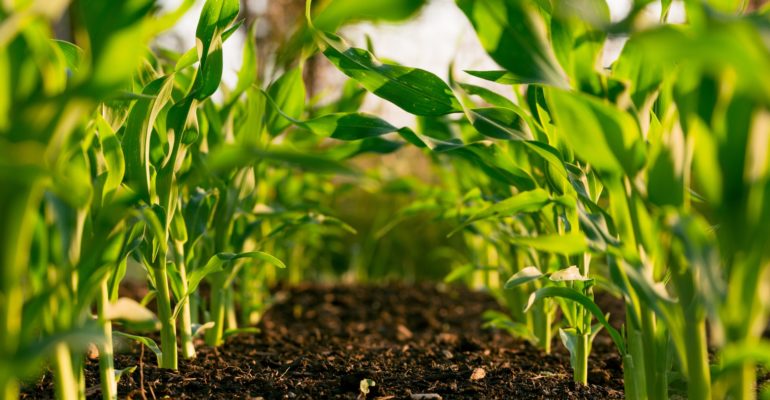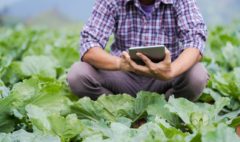GIS Application in Agriculture
June 23, 2022 2022-09-15 0:06GIS Application in Agriculture
GIS Application in Agriculture
Agriculture is essential to the economy of any country. It is a significant trading business for a country with a robust economy. Food production at a low cost is the primary objective of every farmer, large-scale farm management, and regional agricultural agency. The use of remote sensing and geographic information systems to evaluate and display agricultural ecosystems has shown to be extremely valuable to both the farmer community and industry. It has a significant impact on agriculture throughout the world by assisting farmers in boosting productivity, lowering expenses, and managing their land more efficiently.
Remote sensing applications in agriculture include major tasks such as biomass and yield estimation, vegetation vigour and drought stress monitoring, crop acreage estimation, crop phenological development assessment and cropland mapping, mapping of disturbances and land use land cover changes, precision agriculture, and irrigation management.
Case Study:
Land use and land cover (LULC)
Land use/land cover mapping entails recognising surface characteristics at various sizes and categorising them hierarchically, and it is important in the study of world change. Human activity generates environmental concerns such as deforestation and biodiversity loss, while global warming has a significant impact on land usage and land cover. As a result, existing data on land use/land cover can provide crucial input for environmental management decision-making and future planning. Growing population and socioeconomic development result in unanticipated and uncontrolled changes in land use/land cover. A Research is being conducted on a region of the Lahul & Spiti District of Himachal Pradesh. Landsat 7 and 8 data of the years 2005,2010,2015 and 2019 have been used for land use and land cover mapping. The maps for LULC produced using supervised classification techniques using maximum likelihood classification (MLC) algorithm. Supervised classification methods have been used for delineating five major classes: snow/glacier, barren/rocky surface, forest, agriculture/grass, and water. Forest cover reduced from 4.34% in 2005 to 1.58% in 2019. Same way Snow/Glacier has increased from 27.31 per cent to nearly 39.15 per cent in the year 2019. Agriculture practice has decreased from 13.06 % to 6.92% in the year 2019. Slope area that represents the barren land in the study area is reduced from 55.22% to 52.29% in 2019. The area under water also reduced by 0.06% in 2005 to 0.04% in 2019. This study can prove to be important in local, regional and national planning, management and monitoring programmes, as well as providing a better understanding of the aspects of land use and on the other hand, plays an important role in creating the policies and programmes required for development planning.
Crop Information System
A study is being carried out in the Burdwan district of West Bengal, India, to develop a crop information system (CIS) for sustainable rice production through the use of remote sensing and geographic information systems. Remote Sensing (RS) methods were used to locate rice crops. The three varieties of paddy (rice) distribution, Aus, Aman, and Boro, were depicted using Landsat TM satellite data. The secondary data were gathered from the Agriculture Assistant Director’s office in the Jamalpur block. Each Gram Panchayet calculates the cultivated area of several varieties of rice. Both data sets of rice area, one estimated using Remote Sensing and the other obtained from the agriculture office, are compared. The variation curve of different types of rice production in the block is generated using field data. The continuously shifting rice farmed area in this block is also depicted. Finally, it is discovered that all of the geographic searches conducted in this study are the result of the accessible dataset. So that decision-making entities in the study region have access to information on rice growth and management.
Abbreviation:
Landsat: The Landsat Program is a collection of Earth-observing satellite missions administered cooperatively by NASA and the United States Geological Survey. Landsat satellites provide the best ground resolution and spectral bands for tracking land use and documenting land change caused by climate change, urbanisation, drought, wildfires, biomass changes (carbon assessments), and a variety of other natural and human-induced changes.
LULC: Land Use / Land Cover is the categorization or classification of human activities and natural features on the landscape across time using recognised scientific and statistical methods of analysis of acceptable source materials.
GIS: A geographic information system (GIS) is a computer system that generates, maintains, analyses, and maps various types of data. GIS integrates data to a map by combining location data (where objects are) with other forms of descriptive data (what things are like there).
Remote sensing: Remote sensing is the practise of detecting and monitoring an area’s physical features from a distance by measuring its reflected and emitted radiation (typically from satellite or aircraft).



